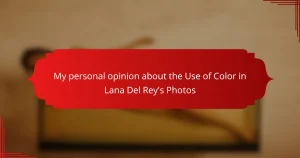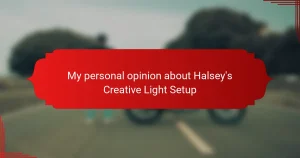Key takeaways
- Lighting design plays a vital role in enhancing the emotional depth of performances and photography, significantly affecting audience engagement.
- Key elements of effective lighting include color temperature, intensity, movement, focus, and timing, each contributing to the overall atmosphere.
- Charlie Puth’s use of warm and vibrant colors in his concerts creates an intimate and immersive experience that resonates with his music themes.
- Lighting techniques in photography can dramatically enhance the emotional connection between the subject and the viewer, capturing the essence of a performance.
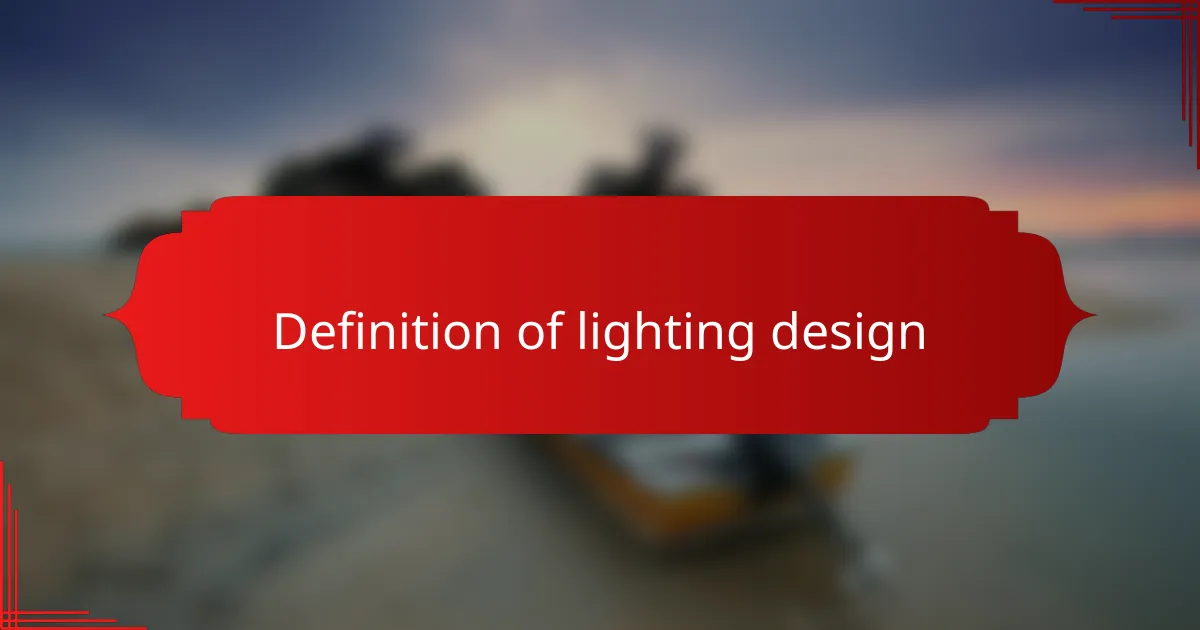
Definition of lighting design
Lighting design is a crucial aspect of any performance that shapes the audience’s experience. It involves the strategic placement and intensity of lights to create mood and highlight specific moments. For me, watching Charlie Puth perform live, the lighting not only illuminated him but also enhanced the emotional depth of his music, amplifying the connection between his songs and the audience.
When considering lighting design, it’s fascinating to recognize several key elements that contribute to its effectiveness:
- Color Temperature: Warmer tones create intimacy, while cooler tones can evoke a sense of distance.
- Intensity: Changing the brightness can dramatically alter the scene’s mood.
- Movement: Dynamic lighting shifts can capture attention and engage the audience more deeply.
- Focus: Using lighting to draw attention to performers or instruments ensures the audience stays connected with the performance.
- Timing: Syncing lights with music can enhance the overall experience, making it feel cohesive and memorable.
From my perspective, a well-crafted lighting design not only supports the performance but tells its own story, much like the emotional journey I feel during Charlie’s shows.
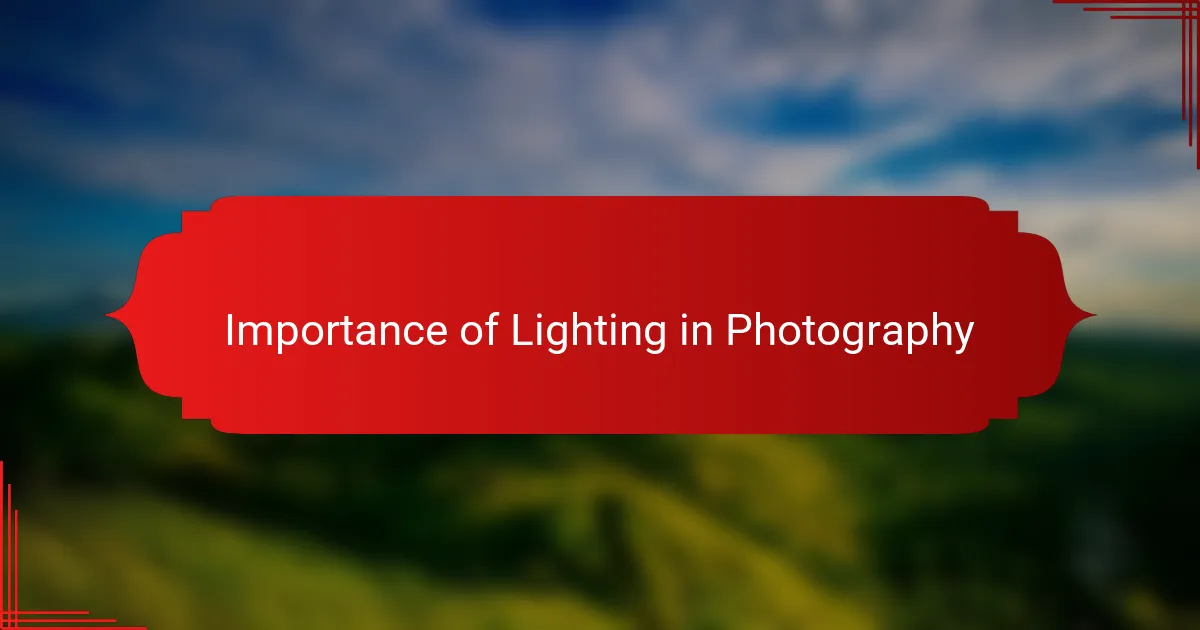
Importance of lighting in photography
When it comes to photography, lighting is absolutely crucial. I’ve always found that great lighting can transform an ordinary shot into something magical. For example, when I took photos of a live performance recently, the way the lights danced across the stage brought the images to life. It’s all about how light interacts with the subject, setting the mood and highlighting the personality of the performer.
In my experience, the best lighting can create an emotional connection between the viewer and the subject. Whether it’s natural sunlight or vibrant stage lighting, each has a distinct impact. For instance, I remember capturing a close-up of a singer under soft, warm lights, which made the portrait feel intimate and inviting.
To illustrate the differences in lighting effects, here’s a comparison table:
| Type of Lighting | Effect on Photography |
|---|---|
| Natural Light | Soft, diffuse, and often warm; highlights natural beauty. |
| Stage Lighting | Dynamic and colorful; enhances drama and emotion of performance. |

Overview of Charlie Puth’s lighting style
Charlie Puth’s lighting style is nothing short of mesmerizing. I’ve always appreciated how he uses light to enhance the mood of his performances. For instance, during his live shows, the interplay between shadows and bright colors creates an emotional landscape that draws the audience in, making every song feel more immersive.
When I first witnessed his concert, the moment the stage lit up in a warm hue during a slow ballad, I felt an exhilarating connection. It was as if the lighting was telling its own story, complementing his voice perfectly. I admire how he often contrasts softer lighting with sharp bursts of color during upbeat tracks, keeping the energy vibrant and engaging.
Here’s a simple comparison of Charlie Puth’s lighting techniques:
| Aspect | Description |
|---|---|
| Color Palette | Warm colors for emotional ballads; vibrant colors for upbeat songs |
| Lighting Dynamics | Soft lighting to create intimacy; sharp lights for high-energy performances |
| Emotional Connection | Lighting enhances the narrative of the music, drawing the audience deeper into the experience |

Techniques used in female singer photography
Capturing female singers in photography often hinges on lighting techniques that bring out their unique personalities. I remember attending a show where the artist’s presence was amplified by a dreamy, backlit glow. It felt almost ethereal, making her every movement feel fluid and captivating. This kind of lighting creates not just a visual aesthetic but an emotional resonance that draws the viewer in.
High-contrast lighting can also be a powerful tool. I once photographed a singer bathed in stark, dramatic shadows. The intensity of the canvas transformed her expression, adding depth and intrigue to the shot. The way the light sculpted her features created a narrative that words sometimes fail to convey. Isn’t it fascinating how lighting can evoke such strong feelings simply by playing with contrast and shadows?
In my experience, experimenting with color gels has ignited some of my best work. I vividly recall a moment when I used a soft lavender light to illuminate a performer during a ballad. The effect was enchanting, reflecting the song’s mood beautifully. This technique emphasizes not just the subject, but the story behind their music, making the photograph resonate with the same emotional depth felt in live performances. How often have you felt a photograph truly reflect the essence of a performance? I believe the right lighting can achieve that connection remarkably well.
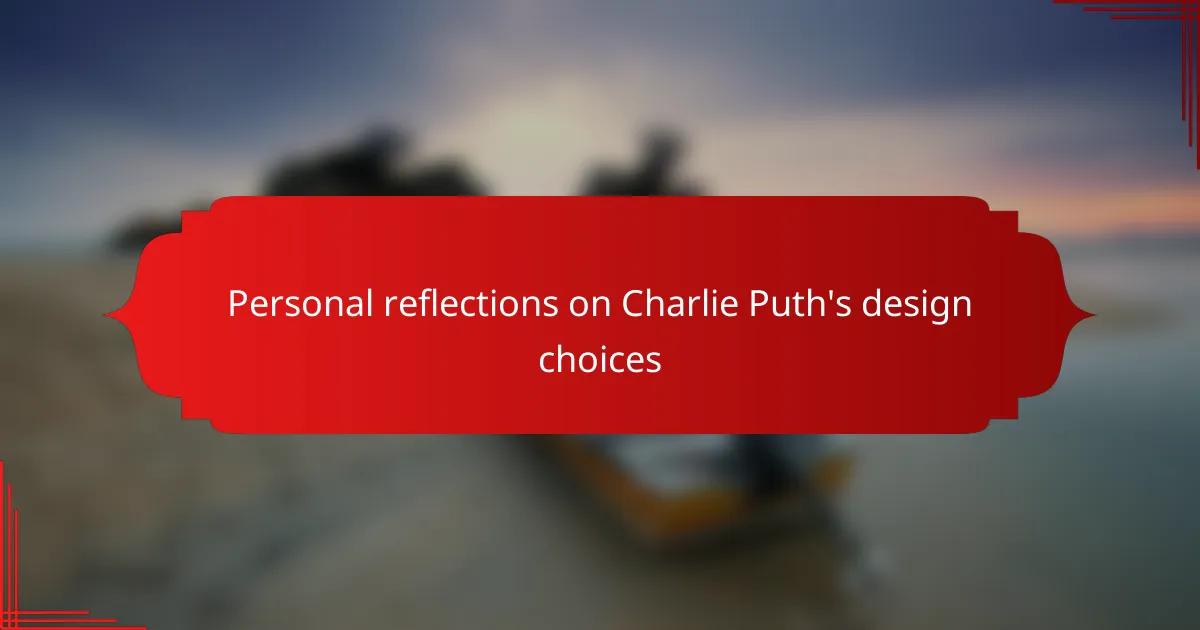
Personal reflections on Charlie Puth’s design choices
Charlie Puth’s lighting design choices are a captivating mix of artistry and emotion. I remember attending one of his concerts and being struck by how the lights transformed the atmosphere, enhancing the feelings evoked by his music. Consider the way warm colors wash over the stage during his ballads; they create an intimate space that invites the audience to connect deeply with every note.
When I reflect on his visual storytelling, I can’t help but admire how each lighting choice complements his themes of love and heartbreak. For instance, the interplay of dynamic lighting during upbeat tracks injects a sense of energy and excitement, making it impossible not to dance along.
- His use of color shifts highlights emotional peaks in the songs.
- Strategic darkness allows for moments of vulnerability, drawing the audience in.
- Synchronization between music and light creates a unified experience.
- The contrast between bright and soft lighting reflects the duality of his lyrics.
- Each concert feels like a unique visual journey, tailored to the mood of the music.
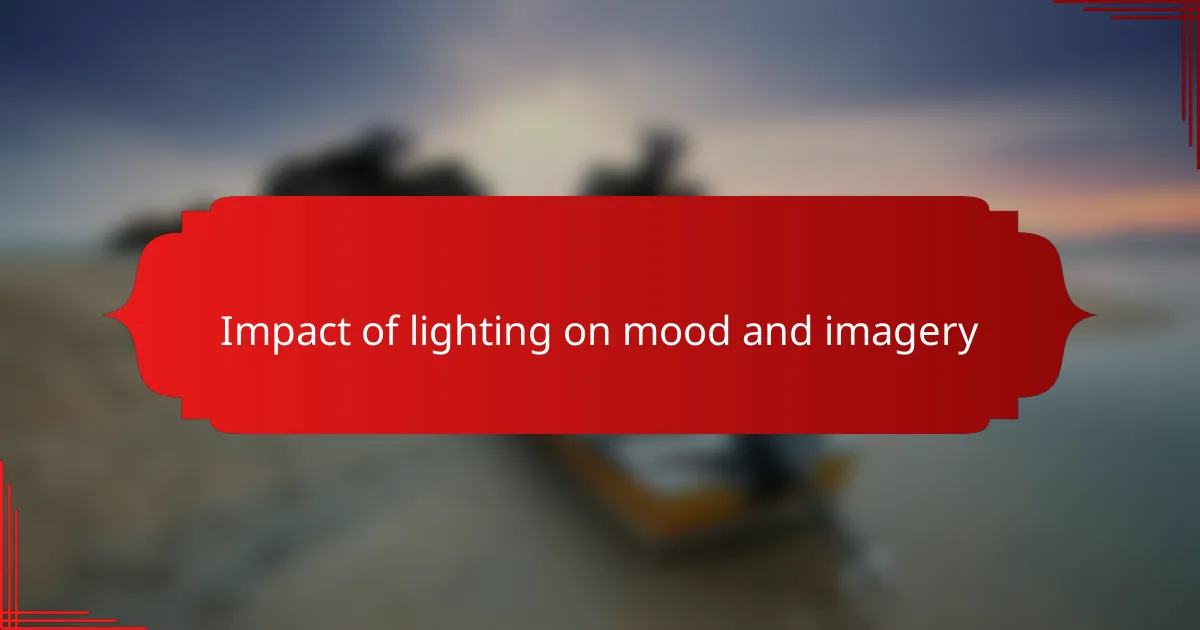
Impact of lighting on mood and imagery
The impact of lighting on mood and imagery in performances is profound. I recall a moment at a concert where the lights dimmed dramatically just before a powerful chorus, creating a palpable tension in the air. That shift not only amplified my anticipation but also heightened the emotional release that followed when the stage erupted in vibrant colors. Isn’t it amazing how such seemingly simple changes can evoke so much feeling?
I often find myself captivated by the subtle nuances of color temperature as well. For instance, during a more intimate song, cooler blue lights envelop the stage, creating a sense of distance that perfectly matched the melancholic lyrics. It’s like the lighting mirrors the emotional landscape of the song, enhancing the overall experience. The way these colors interact with the performer can make the audience feel as if they’re sharing in a personal, heartfelt moment.
Moreover, the timing with which the lighting changes happens makes such a difference. I’ve seen it when the lights pulse in sync with the beat, transforming an ordinary moment into an extraordinary one. Such synchronization can make every beat feel alive, engaging the audience on multiple sensory levels. It’s extraordinary how lighting can help shape not only our perception but also our emotional journey throughout a performance. Have you ever found yourself lost in a performance just because of how the lights danced with the music?
